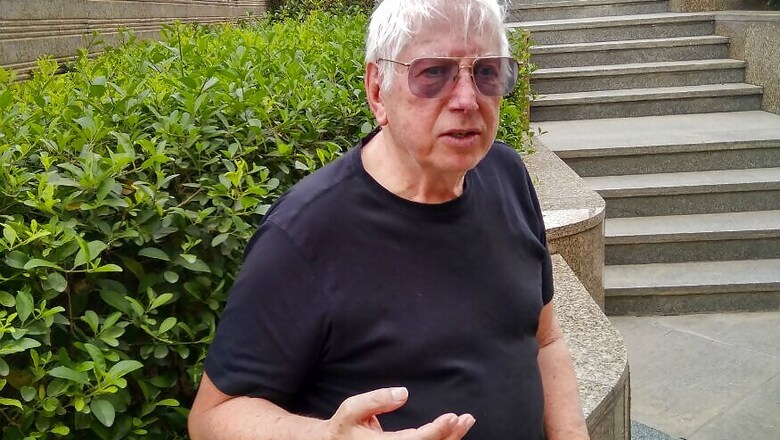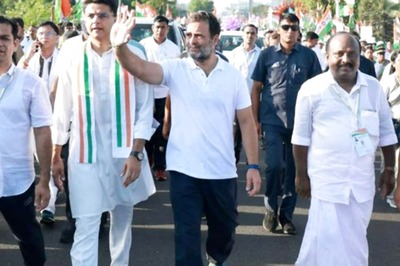
views
Walter K Andersen, co-author of The Brotherhood in Saffron: The Rashtriya Swayamsevak Sangh and Hindu Revivalism, is considered as one of the foremost authorities on the RSS. More than three decades after its debut, the book continues to be on the must-read list for anyone trying to understand the saffron strain of Indian politics. Currently working on an updated version of the book, Andersen talks to News18’s Eram Agha on the growth trajectory of the Sangh and the rise of Narendra Modi. Excerpts:
Q. The RSS will be a 100 years old in 2025. As someone who has been observing the organization since the days when MS Golwalkar was the Sarsangchalak, how do you see the Sangh at 100?
There is a growing urban middle-class orientation (towards RSS). Well, it was always the middle class (that formed the core of the Sangh) with support from the high-caste, but what’s happening now is that there is a more regular middle class. The organization has grown in terms of membership. But the real influence is not that. The real influence is their affiliated organizations and the seva activities. They have over 150,000 seva activities. There is also a Muslim manch established to get Muslim support but the interesting thing is it is not considered an affiliate. None of the organizations had that kind of spread and depth. In fact, the communists used to hold this kind of influence in the 1930s, 40s and 50s but with the Left in India has by and large collapsed and it doesn’t have that kind of reach it once had.
The Left, and the RSS and its affiliates have a lot in common. Ideology is not a straight line, it is a curve and at the end of the curve there are lot of things in common. RSS supplies a cadre to BJP and communists are also cadre organization. At the core is the sentiment of who can sacrifice their life for the well-being of the country. I am not sure they (Left) will be able to recover.
The RSS recently inaugurated their new block (in their Delhi office, Keshavkunj) and it will bring together some of their affiliate organizations. This is a sign of growth, there is a conference room with state of the art equipment, IT team etc.
Q. How happy do you think is the current RSS leadership with the performance of the Narendra Modi government?
In the organization there is this question that Modi has tended to concentrate authority in the PMO and that he is very much his own man. What people say is India needs this kind of leadership but many in the RSS have problems because they function as a collegium. That is not to say they are not proud of him, they are, he has brought them all sorts of potential, especially the affiliated organizations. The RSS doesn’t need him as much but the affiliated organizations do because they deal with whole range of areas affected by the government: take their schools, they have the largest private school system in the country by far, they have three million students in their schools. I think the next largest is Roman Catholic Church but it has only a few hundred thousand and the middle class no longer goes to missionary schools.
Q. How do you rate Mohan Bhagwat’s public image as the RSS head ever since Modi came to power?
Bhagwat obviously got more publicity (among all Sarsanghchalaks), a lot more, and he handled it well. RSS focusses on collegiality and doesn’t not emphasize on the individual. He doesn’t try to take centerstage, but Modi is not like that, which is why he had difficulties with RSS in Gujarat. He was not collegial. He made decisions on his own but that doesn’t mean he doesn’t respect Bhagwat. His transformation as a person was under the aegis of RSS. Bhagwat’s father was one of the people who helped him. He sees RSS as an organization to build nationalism.
Q) What are the challenges ahead of Modi in defining Hindu nationalism?
One of the major challenges is the radical right. The challenge is how to keep them under control. Donald Trump in the US has similar issue, the far right is crazy and says awful things. All this rebounds to the disadvantage of the leader. I think he, like Trump, needs to be little more outspoken. I know he has to be more cautious than Trump because he does not want to undermine his core base support. But if you allow this to go too far, Modi may have to pay the price in international affairs, which has been his great areas of success. He has been lucky that there has been no communal issues of major scale, which has caught attention of international press. I think he has to work more.
Q. The Gauraksha brigade, or beef vigilantes, made international headlines with many incidents of violence being reported from across the states. Modi described it as a “law and order” issue. Where do you think the RSS really stands on it?
As the RSS is growing, there has been more internal divisions: the Vishwa Hindu Parishad (VHP) tends to be the most radical. Sangh is against it. Why are we getting more and more liberal opinion from here? It is because of the educated middle class: the group with which they are growing, the urban middle class doesn’t like that sort of thing. One of the RSS leaders said about same sex marriage, that it is up to people to decide. Ten years ago they would not have said that. Never. Even if they believed that. And it is because of the urban middle class. A large number of the new pracharaks are engineers.
Q. Modi’s economic policies are not exactly aligned with the Swadeshi worldview propagated by the RSS. Is there an innate conflict here? How do you think it will pan out?
While their core support group has been small group traders, with India’s rapid expansion since the 1990s that group has moved from small scale to bigger. And you have many recruits from the growing middle class. In fact, that’s one of the untold story of this country, this rapid expansion of the middle class. Congress hasn’t got their support, Communists haven’t got their support, regional parties don’t have their support, they have largely gone to the BJP. May be except in South India, but it is happening there as well. In terms of economics, there are divisions in RSS. Some are against foreign investment but the government has encouraged it. The Bharatiya Mazdoor Sangh (BMS) – the Sangh’s trade union – is not happy about privatization either. So there will be divisions inside. For instance, the BMS is not happy with the chief minister of Rajasthan.
Q. The American ‘liberal’ media has been criticized for getting US polls fantastically wrong. People have drawn comparisons between that and the strained relationship Narendra Modi has with the Indian mainstream media, arguing that Indian media is doing the same mistake in gauging Modi’s public support. How do you look at this?
Journalists in India and US tend to be more on the left of centre than right of centre, but it is more so in the US. It is much more liberal than the population, therefore, among our 100 major newspapers 90% supported Hillary Clinton. The newspapers in the US are declining in importance. Social media is now becoming the name of the game in communicating views, which is why Trump has moved to Twitter. He loves to tweet and the same is happening here with Modi. He has a whole staff, and that’s all they do – tweet in his name.
Q. What is Veer Savarkar’s place in the RSS? His thoughts shaped the Sangh philosophy but of late the Sangh and BJP seems to be more aggressively promoting the thoughts of Deen Dayal Upadhyay, who many in the Sangh once considered intellectually inferior to Savarkar…
Savarkar’s time has come. There will be a relook. He is one of the heroes of the BJP and is going to get much more attention. My colleague Shridhar Damle is writing a book on him. For years there has been contempt for Savarkar, he was demonized for being a Hindu nationalist, and therefore there was a period considered threatening for the dominant party and the dominant family… that age is over. You will see him in books and movies as his life has elements of drama.
Savarkar was very much a modern man who believed in industrialization, was an atheist, anti-caste, very nationalistic, and wanted India to move in citizenship empowerment. He did not like Golwalkar because he found that he was not active in socializing. A prominent person in BJP had two large paintings in his foyer: one was of Mahatma Gandhi and the other was of Savarkar. I asked why these two? He said: “to remind myself that at that time Mahatma Gandhi understood the Hindu psyche much more than Savarkar. He was 50 years ahead of his time.”
Q.How do you see the women wing of RSS growing?
Samiti has not grown as fast as the Sangh, which has expanded several times along with the affiliate organizations. Samiti members participate in sewas but as an organization it has been relatively smaller, I am not sure why. I am told it is not very strong in Haryana and Punjab - don't know why?
Q. Any predictions for the General Elections Slated for 2019?
The NDA could come back with Modi as PM. One difference now (compared to 2014) is that there is no national opposition to the BJP. I think Congress is collapsing. Rahul Gandhi is a nice man but somewhere his heart doesn’t seem to be in it. He doesn’t seem to love it. In politics you have to love it.

















Comments
0 comment